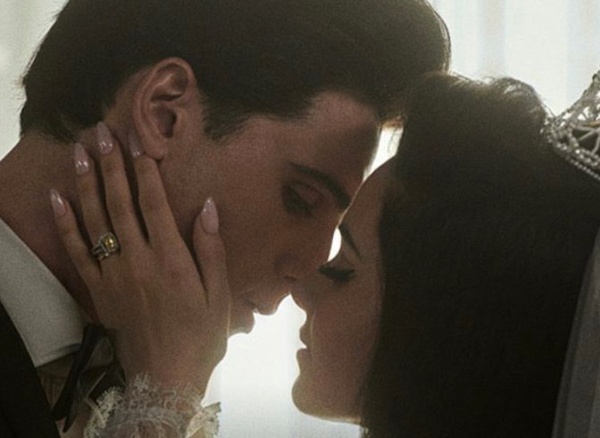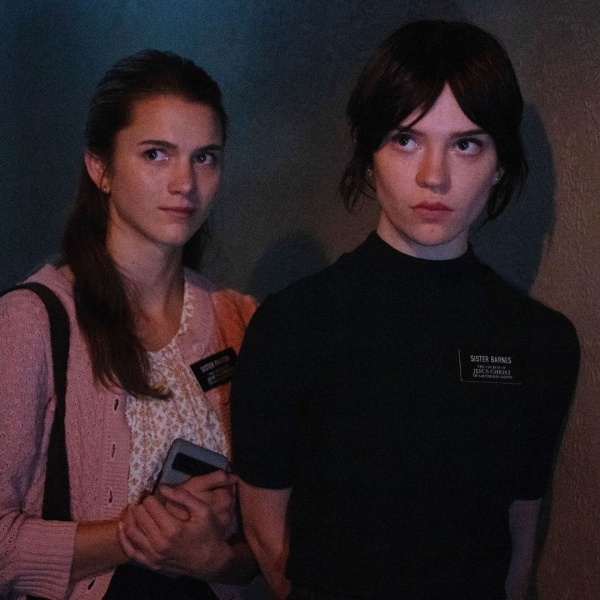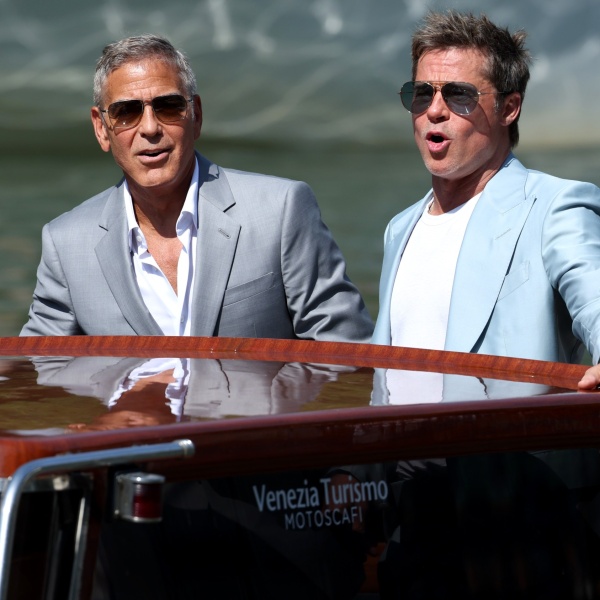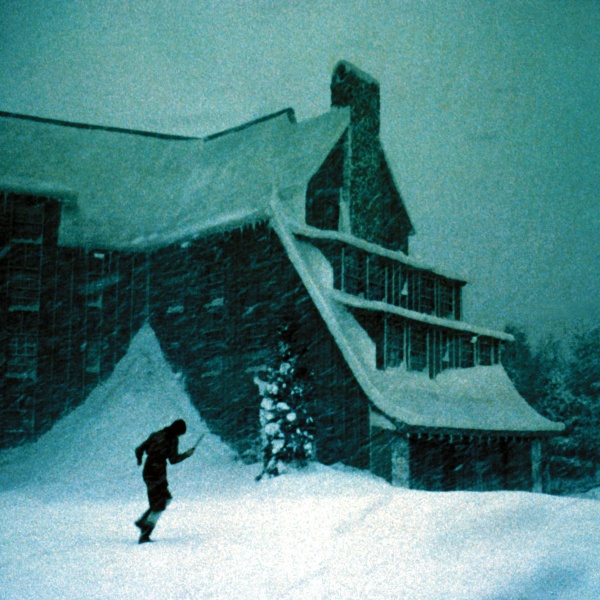The walls of James Mangold‘s spacious office on the Fox lot are covered with posters, many of which are for his own films: “Ford v. Ferrari,” “3:10 to Yuma,” “Walk the Line,” “Cop Land,” and “Logan.” It’s a reminder that this week’s “Indiana Jones and the Dial of Destiny” is not the first time he’s steered a vintage franchise into port.
“Logan” tracked a similar arc, as an aging Wolverine makes peace with his daughter while facing his own mortality. It gave Mangold confidence that dealing with Indiana Jones’ seniority was not a problem. “In both cases,” he said, slouching on a sofa in his office, “you’re faced with a hero in a twilight of their life having a reckoning with who and what they are.”
There are reasons, many of which are good, why an established filmmaker should avoid a high-profile sequel. Sky-high expectations; inevitable comparisons to master director Steven Spielberg; multiple power players in the kitchen. It took Mangold some time before he agreed to take on the fourth and final Indiana Jones sequel, the first not directed by Steven Spielberg or written by producer George Lucas. In 2019, Mangold received separate (and coordinated) pitches from producers Kathleen Kennedy and Spielberg, and from star Harrison Ford.
“That was very disarming,” he said.
Mangold knew Kennedy and Ford, and had a superficial relationship with Spielberg, whom he admired and felt kinship as a fellow cinephile. “We share a healthy reluctance to adapt to a new, more aggressive style of filmmaking,” said Mangold.

Spielberg was building sets in pre-production, but Mangold read the script and felt he needed more time to bring the project into focus. “There were some good ideas in it,” said Mangold. “But the biggest reason to say ‘no’ was the date. I would be jumping on a moving train.”
So the director requested a delay. The producers came back with six months. “That’s not enough,” he said. “The script doesn’t show me that there’s a reason to make this movie.”
Mangold moved to the pursuit of his Bob Dylan ’60s folk-scene film “A Complete Unknown” starring Timothée Chalamet, until the pandemic shut that down. Then Kennedy made him an offer he couldn’t refuse: a year to figure out “Dial of Destiny.”
He also had a generous studio budget (hefty development charges, plus extra pandemic costs: $295 million. “They met my terms,” said Mangold. “I had to screw my head on to the idea that I was essentially a pinch hitter for Babe Ruth. I had to understand my job was to move the batters, the men on base, and to play the game as well as I could, but not to try to rethink the whole thing. I didn’t feel like I had to play out some sort of rejection of his aesthetic. I’m a profound admirer.”

Mangold said he wanted to work with this “Mount Rushmore of historically important film figures. I had admired all these cool potential collaborators all my life. And despite warning signs of this kind of a movie being a bear to manage and to launch, and expectations would run in all sorts of directions, and not all of them could ever be met, the thing that was most seductive was the personal opportunity to work with Harrison, Steven, Kathy, George, and John Williams. It was impossible to say ‘no’ to what was essentially the personal opportunity of a lifetime because you don’t ever get close to people unless you do something together.”
Mangold talked to the creative team about facing Ford’s age. “You can’t make this one of those movies where the leading man is pretending he’s 40,” he said. “But it’s also a chance to figure out what the movie is about. Why can’t it be about, in some sense, what it is to be a hero in such different times, as well as in a body that’s getting older, and in a life that has both its triumphs and its regrets?”
Character is the driving force for Mangold’s movies, including Indiana Jones. “From the moment George first conceived of this character, it was built on so many wonderful character contradictions,” he said. “The bookish, nerdish character who was also an adventurer, almost like a Superman/Clark Kent relationship in his life, and he’s such an avid historian and secularist who believes in science, and is yet repeatedly confronted with miracles.”

Mangold and his “Ford v. Ferrari” screenwriters Jez and John-Henry Butterworth spent six to eight months hammering out a new script. “It needed to be entertaining, fast-moving, and have action,” said Mangold. “It needed to be a family film that introduced a wide array of charming and different eccentric characters, all the things that typify an Indiana Jones film.”
But first, they had to confront the “Crystal Skull” problem. “I had to make something that was going to have a dialogue with a contemporary audience,” Mangold said. “I thought the reason ‘Crystal Skull’ had a rougher ride than the previous three movies was a challenge that I was faced with as well.”
“When the first three movies were made, they all took place in the ’30s or ’40s, they all existed in harmony with their setting,” he continued. “You had a movie that was shot in Technicolor noir, high shadow, deep focus, blocking, and style. You have John Williams doing [composer Erich Wolfgang] Korngold. You have Harrison Ford in his fedora, channeling ‘The Treasure of the Sierra Madre’ and 19 other things all at once. You have George and Steven who are in love with Golden Age filmmaking and you have this tremendous unity of style.”
“Crystal Skull” disrupted all that when it jumped to the mid-’50s, Mangold said. “It was not just that Harrison’s older, but that the movie had now entered a period of modernism. The world was no longer a world of black-and-white villains. The adversaries were going to be inevitably more shaded with gray as we had entered a period of realpolitik and changing values. This made it more challenging if you look like some guy with a bow tie walking around. You have to make a movie about the idea of the character being a little out of time.”
The writers decided to run with the idea of starting the movie in 1944, at the height of Indiana Jones’ powers. “I thought there would be a way to carry the audience through Harrison’s present-day age by greeting them first with an energetic homage to the previous films,” said Mangold. “You confront the audience with a young Indy in full flower and full action, and then make a sharp turn. Take everything away and let the audience confront the difference between now and then in a brazen way. That was the cut I was most excited about for the movie.”

The 1944 Indy had to be digitally de-aged by VFX. Mangold had more to work with than most: There’s plenty of footage of Ford as Indy at different ages and the actor stayed exactly the same size today as he was at age 38. (They had to make do with Ford’s 79-year-old voice.) “Because this is a wrap that goes around the actor, it means that there’s no distortion,” said Mangold, “because their shape hasn’t changed.”
Williams was a huge help to Mangold as he sought the right tone. “[I told Williams], ‘John, in the first reel you’re just letting the horses out of the barn, you do what you do, and let it rip. And then on this cut to 1969, we suddenly shift gears. And I’m not sure when we hear BUM BA BUM BUM again. You’re then doing the score to a ’70s movie.’” (Williams said, “I can do that.”)

“The flow of the movie was falling off this cliff into Indy’s current reality,” said Mangold. “And then as he begins to gather himself, steel himself, and heads onto the road. By the time he and Phoebe [Waller-Bridge] are in full mode racing around Morocco with Mads Mikkelsen, the music found itself back and by the time they get out at sea, in Greece, it’s full-on an Indiana Jones movie with an old Indy.”
Writing Indy’s British goddaughter, con-artist Helen Shaw, was another challenge. The character was inspired by another “comedic yet diabolical” con artist, Barbara Stanwyck in “The Lady Eve,” and Mangold eventually convinced the “Fleabag” auteur to play the role that was tailored for her.
“There was no one else I could possibly imagine who would be more fresh, bring more of a bag of challenges to Harrison as an actor,” he said. “There are actors who are really good on skis, cutting this way and that and yet holding you to the core of their character. You sense about her immediately that there’s so much intelligence and capability in this woman that she could cut the skis.”
Spielberg checked in every week or two with notes on pages and dailies, which Mangold described as “extremely liberating and instructive.”
Said Mangold, “Every shot has a purpose in Steven’s work. A methodology has evolved to just shoot the shit out of it from every direction and figure it out later [and] that basic difference is a big deal in terms of how the process works. Single-camera filmmakers who are building sequences out of shots with a purpose has gotten quite rare. It’s all built on a powerful connection to the movies he grew up with. You see the roots in classical Hollywood filmmaking and you see this effort to keep that dialogue and that vernacular alive. That’s something I’m connected to.”

Next up: Mangold is back in prep for “A Complete Unknown.” Chalamet and the cast are in the studio recording and readying for a fall shoot, assuming the unions have settled by then.
Being part of the Lucasfilm family has yielded a possible “Star Wars” prequel, which Mangold was in the process of mapping out when the WGA strike hit. The movie is set 25,000 years before the other films, at the moment when The Force is discovered. “I pitched to Kathy a religious epic, a Ten Commandments of where this came from, and how it was found, and those who discovered it and how they reacted to it. And the miracle of it,” he said.
Another script, still to be written, is an adaptation of the DC Comic “Swamp Thing,” which Mangold pitched to James Gunn and Peter Safran. “It’s a Gothic horror film about this character,” he said. “It’s a great comic book, but it is also a really interesting character predicament in which this creature is trying to figure out what happened to him. And who did this. It’s kind of a vengeful Frankenstein story. This person had been set up, and somehow poisoned, and turned into this thing in which he had lost all that he had loved, including his own humanity. I find it a resonant, modern theme.”





